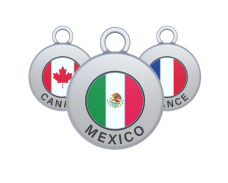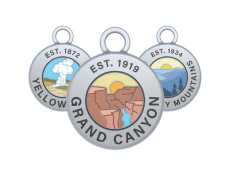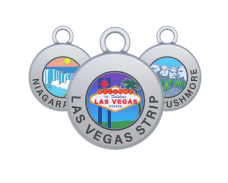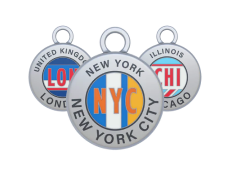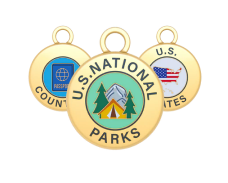
In honor of Earth Day (fun fact: it always falls on April 22), there’s never been a better time to lace up your hiking boots, head outside, and practice the Seven Principles of LNT.
But wait…what is LNT, exactly? Seasoned hikers, backcountry explorers, and other avid outdoor enthusiasts are likely familiar with the philosophy, but for anyone who isn’t, allow us to explain.
LNT, or, officially, Leave No Trace, can be thought of as the 2.0 version of “leave only footprints.” Essentially, it means minimizing our impact on Mother Nature to protect and preserve natural resources.
If you’re just hearing about LNT for the first time, you may be wondering, “Why is Leave No Trace important?” Here, we answer that and offer several suggestions and tips for implementing this sustainable concept.
What is LNT?

First things first, let’s answer the main question: what is LNT?
LNT, AKA Leave No Trace, is a code of ethics for anyone spending time outdoors. “Outdoors” means very literally anywhere outside, whether it’s a local community park, a national park or forest, a river or lake, an urban cycling trail, or a backcountry campsite.
Established by the Leave No Trace Center for Outdoor Ethics, LNT consists of seven clear, easy-to-follow principles.
1. LNT Principle 1: Plan Ahead & Prepare
Consider how you would prepare for an international trip: Passport? Check. Visa? Check. Awesome itinerary? Also check.
Venturing into the wilderness, even for a short time, requires that same level of planning. Invest time into researching and prepping for how you can ensure the safety of your group while also protecting the environment.
Implement this LNT principle: Extensively research your destination and identify clear goals for the trip. Pack clothing and gear suitable for a range of weather conditions and have at least one backup plan. You never know when a trail or campground is closed or you may run into something else unforeseen.
2. LNT Principle 2: Travel & Camp on Durable Surfaces
Beyond the epic views, the goal of every backcountry adventure is to leave the area’s natural habitat undisturbed. Land management agencies develop and construct trails to have minimal impact on the environment, so stick to these paths and designated campsites.
Implement this LNT principle: On the occasion that you do venture off-trail, choose durable surfaces such as rock, sand, and gravel that better withstand wear. Never trample on living soil, vegetation, or water sources.

3. LNT Principle 3: Dispose of Waste Properly
This third principle is the one that usually comes to mind when you ask yourself, what is LNT? “Pack it in, Pack it out” is the backbone of the Leave No Trace ethos.
You likely already know to bring your food waste and other garbage back home, but this LNT principle relates to everything – including human waste.
Implement this LNT principle: Always bring a shovel along on your outdoor adventures (we love this Coleman foldable version) and when nature calls, dig a small hole at least 200 feet from water sources, hiking trails, and campsites. Cover the hole, then pack out your toilet paper.
Pro tip: save plastic grocery bags for this purpose and always double-bag!
4. LNT Principle 4: Leave What You Find
As pretty as they may look displayed in your home, interesting rocks, branches, flowers, and leaves are crucial to the ecosystem.
Taking “souvenirs” home from Mother Nature is devastating for the flora and fauna that depend on them to survive. Even chiseling your initials into a tree trunk or stacking rocks into a cairn can damage the delicate environment and lead to decay.
Implement this LNT principle: The best campsites are found, not made. Park, pitch your tent, and make your fire in well-established areas, when possible.

5. LNT Principle 5: Minimize Campfire Impacts
If you want a great example of why is Leave No Trace important, look to campfires. They’re
arguably one of the best aspects of going camping. However, they can also be extremely dangerous. Every year, thousands of acres of forest are destroyed by wildfires — and often, they start accidentally, from a campfire that was left burning or allowed to get out of control.
Before lighting a campfire, run a risk assessment: ask yourself whether it’s truly necessary and if conditions are safe enough. You should also acquaint yourself with local fire regulations.
Remember, an LNT-approved campfire will show zero evidence that it was ever constructed.
Implement this LNT principle: Only build campfires in existing fire rings or pits. Always extinguish flames with water and never walk away from a still-smoldering fire.
Also, thanks to the advent of lightweight portable fire rings and camp stoves, lighting “real” campfires is no longer a true necessity — so when conditions aren’t right, don’t ignite.
6. LNT Principle 6: Respect Wildlife
For many people, the mere possibility of spotting wild animals is a highlight of spending time outdoors. Why is Leave No Trace important in terms of wildlife? Great question!
The sixth LNT principle reminds us that we are guests in animals’ home habitats and we have a responsibility to respect them. Keep a safe distance and never interact with wild animals.
Implement this LNT principle: Never, ever feed wildlife. Animals have their own innate methods for sourcing food and feeding them causes an unsafe (not to mention unnatural) reliance on humans.

7. LNT Principle 7: Be Considerate of Others
It’s no secret that spending time “unplugged” in nature boosts our mental health and cognitive function. Noisy technology such as music coming from portable speakers may negatively impact others sharing your outdoor space. Familiarize yourself with right-of-way codes to avoid unpleasant encounters.
Implement this LNT principle: When passing another hiker on a narrow trail, the person headed downhill should step aside to allow the uphill traveler to safely pass.
Why is Leave No Trace Important?

As people’s interest in The Great Outdoors continues to surge, the 7 principles of LNT are more important than ever.
Carelessness, especially in nature, has a direct, catastrophic impact on Mother Earth. For example, over 85% of wildfires in the US are caused by human activity.
We can also look to reckless overcrowding that puts both the delicate natural landscape and human lives in danger. To protect both of these precious resources, permit and reservations systems have been implemented in popular places like Zion’s Angels Landing and the iconic Old Rag hike in Shenandoah National Park.
The next time the questions "what is LNT?" or "why is Leave No Trace important?" arise, seize the opportunity to share your knowledge about this important topic.
And while we're on the topic of sustainable adventuring, here's something you may not have considered: minimal-impact travel souvenirs.
The Wander Club's Shop Travel Tokens and Shop Token Holders are portable, customizable, and best of all, made from high-quality materials including vegan leather and solid brass. No toxic single-use plastic here!
With Travel Tokens commemorating U.S. National Parks, Famous Landmarks, and even Baseball Stadiums, there's something for everyone. You can even customize one (with maybe "Leave No Trace," for example)!

